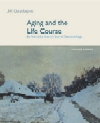Were the Aged Venerated in Pre-Industrial Society? Veneration in Non-Western Cultures The Veneration of the Aged in Colonial Times, 1620-1770 The Decline of Veneration of the Aged, 1770-1860 From Veneration to Degradation in the Post-Civil War Period, 1860-1920 Romanticizing the World We Have Lost The Aged as a Social Problem, 1920-1970 The Tyranny of the Aged
Did Modernization Undermine the Extended Family? Inheritance Patterns and Household Structure Urbanization and Household Structure
Did Industrialization Push Older Workers Out of the Labor Force? Work for the Aged in the Old World Work for the Aged in the Colonial New England, 1620-1770 The Decline of Skilled Craft Labor, 1860-1920 Retirement as a Tool of Labor Market Management 1920-1970
Is Institutional Care a Product of Modern Society? Boarding the Frail Elderly in the Colonial Era, 1620-1770 The Rise of the Almshouse, 1770-1850 The Growth of Specialized Institutions for the Aged, 1850-1920 The Growth of the Nursing Home Industry, 1920-1970
Modernization Theory and Historical Evidence Boxed features In Their Own Words: The Grandmother of Frederick Douglass, a Former Slave Aging Around the World: Inheritance Patterns and Household Structure in
the Old World Diversity in the Aging Experience: The Mennonites on the Frontier An Issue for Public Policy: Does State Support for the Aged Undermine
Familial Obligations?
| 


 2002 McGraw-Hill Higher Education
2002 McGraw-Hill Higher Education